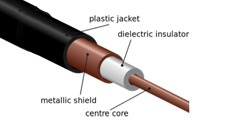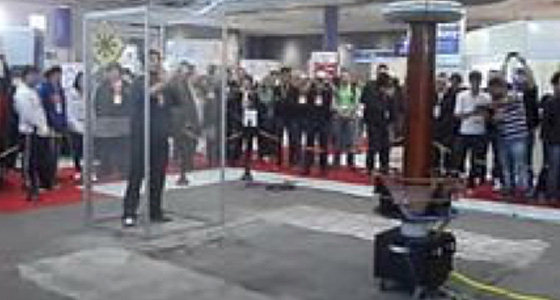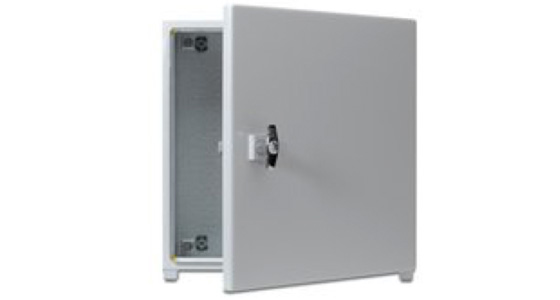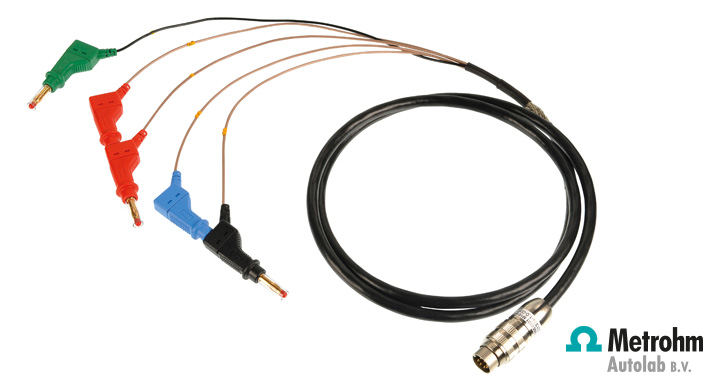Metrohm Autolab cell cables with shielded conductors.
A shielded cable has one or more insulated conductors enclosed by a common conductive layer. The shield is typically composed of braided strands of copper or aluminium, or a layer of electrically-conducting polymer, protected by a plastic jacket. This shielding acts as a Faraday cage to reduce electrical noise from affecting the signals, and to attenuate electromagnetic radiation that may interfere with other devices. The shield also minimizes capacitive-coupled noise from other electrical sources.

A Faraday cage is an enclosure formed by conductive material or a mesh of such material, used to block electric fields. Faraday cages are named after their invention by English scientist Michael Faraday in 1836.

Faraday cage shielding a man from high-voltage electricity [Play media]
A Faraday cage operates because an external electrical field causes the electric charges within the conducting material to be so distributed that they cancel the effect of the field effect in the cage’s interior. This phenomenon is used in electrochemistry to protect cells from external radio-frequency interference (RFI) when low-current experiments are performed.

Metrohm Autolab Faraday Cage
Faraday cages cannot block static or slowly varying magnetic fields, such as the Earth’s magnetic field (a compass will still work inside). To a large degree, however, they shield the interior from external electromagnetic radiation if the conductor is thick enough and any holes are significantly smaller than the wavelength of the radiation.
This animation shows how a Faraday cage works. When an external electrical field (grey arrows) is applied, conduction electrons in the metal move to the left side of the cage, giving it a net negative charge, while the remaining unbalanced charge of the nuclei give the right side a net positive charge. These induced charges create an opposing electric field (red arrows) that cancels the external electric field throughout the box.









